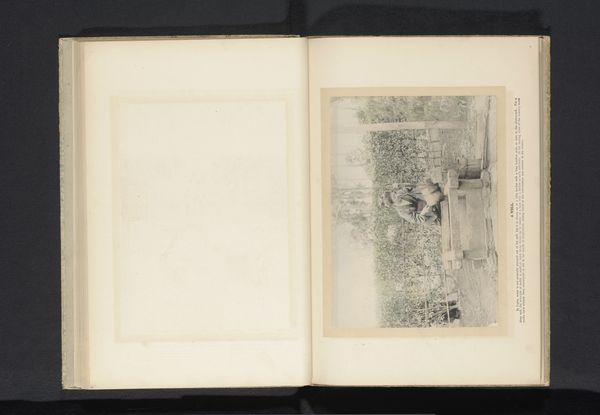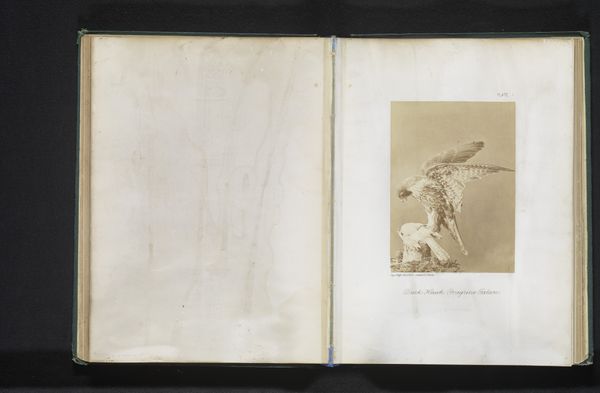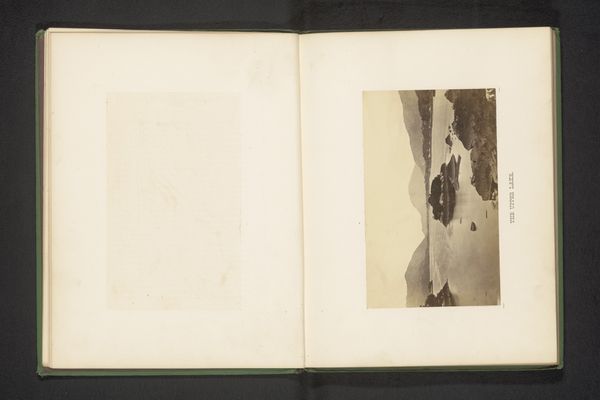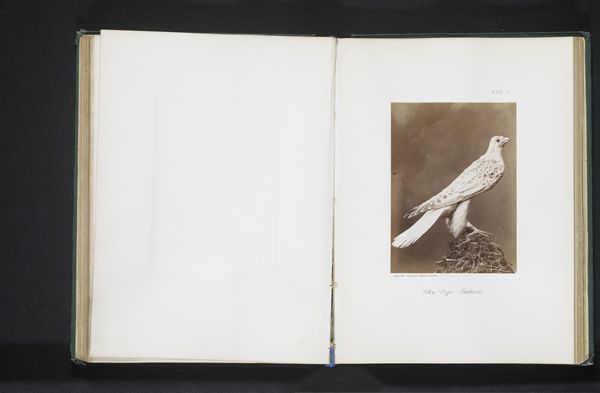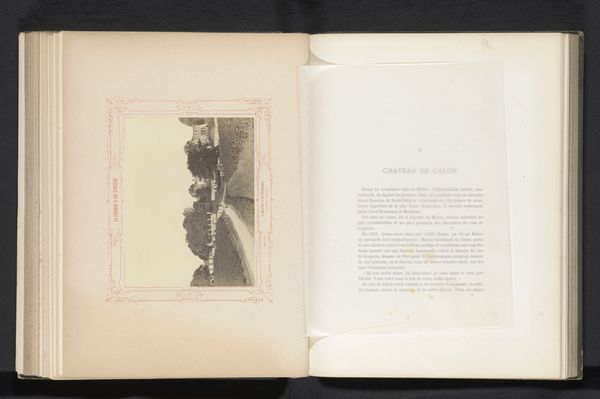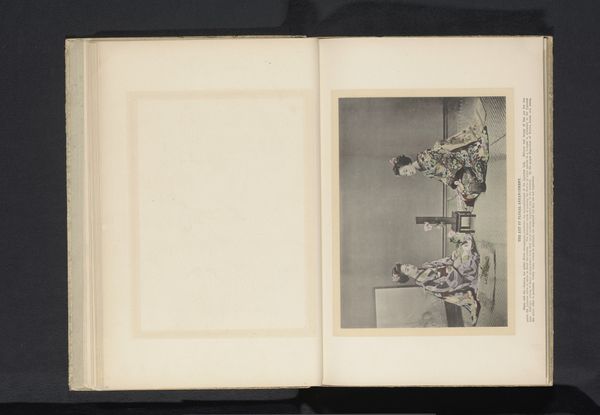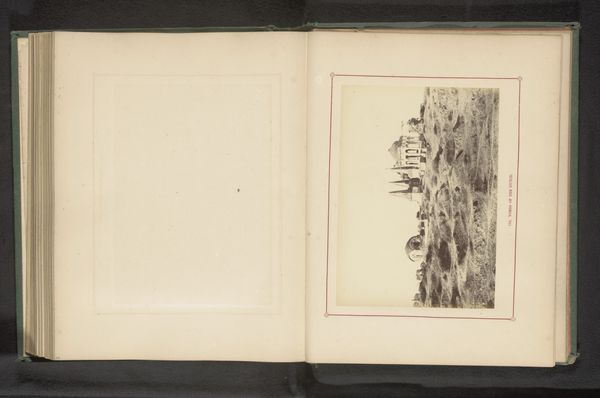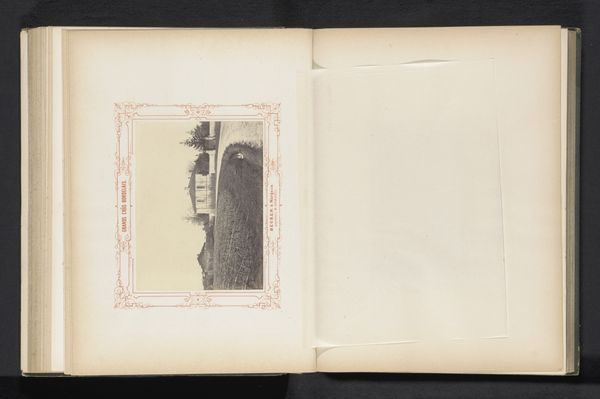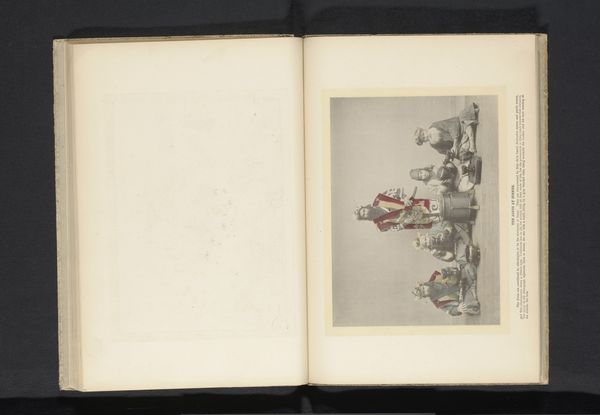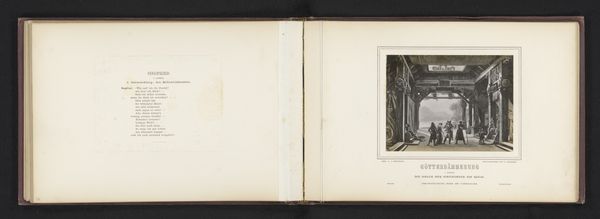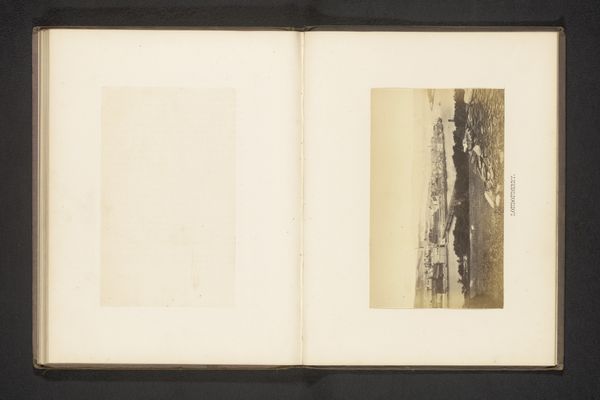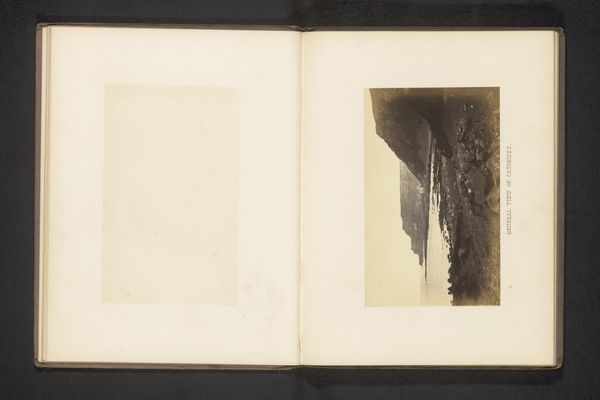
Dimensions: height 166 mm, width 231 mm
Copyright: Rijks Museum: Open Domain
Editor: Here we have "Six People in a Boat on the Sumida River," a print created before 1900, part of the Ukiyo-e movement. The hazy monochromatic palette gives it a dreamlike quality, and the boat seems to dominate the composition. What strikes you most about it? Curator: What captivates me is the formal relationship between the boat and the river. The artist employs a strong horizontal emphasis to compress the space, denying the viewer a sense of depth. The very narrow tonal range does a similar job. How does this flatness influence your perception? Editor: I see what you mean. The almost complete lack of strong color or sharp contrast definitely pushes everything forward. But does that mean we’re meant to focus primarily on the surface and shape, rather than, say, the figures or the landscape behind? Curator: Precisely. The figuration exists more to define the picture plane than to convey individual narratives. Instead of depth, we are presented with shapes and their relationships. For instance, notice how the figures closest to us echo the slightly blurred, less contrasted treeline on the riverbank behind them. The image constructs a tapestry-like density in the foreground. Do you perceive this visual strategy contributing to the artwork’s aesthetic impact? Editor: I think so. By flattening the perspective and linking the foreground to the background, the artist really does call attention to the formal design of the print. Curator: Indeed. By minimizing traditional perspectival cues, the composition achieves a heightened degree of self-referentiality, prompting the viewer to engage in formal and conceptual speculation on art itself. Editor: That's a completely fresh perspective for me. Now I can see the artistry, quite literally, in the surface. Curator: I agree. Thinking through the relationships between formal qualities can transform our perception of any work of art.
Comments
No comments
Be the first to comment and join the conversation on the ultimate creative platform.
